The Name Of The Rose (1986)
Directed by: Jean-Jacques Annaud
Written by: Andrew Birkin, Gérard Brach, Howard Franklin, Umberto Eco
Starring: Christian Slater, Elya Baskin, Helmut Qualtinger, Sean Connery
HCF REWIND NO. 165: THE NAME OF THE ROSE [West Germany, Italy, France 1986]
AVAILABLE ON DVD AND BLU-RAY
RUNNING TIME: 125 min
REVIEWED BY: Dr Lenera, Official HCF Critic
Northern Italy, during the early 14th century. Franciscan monk William of Baskerville and his novice Adso of Melk arrive at a Benedictine abbey where a mysterious suicide has occurred ahead of an important theological Church conference. William, known for his deductive and analytic mind, confronts the worried Abbot and gains permission to investigate the death. Over the next few days, several other bizarre deaths occur, and the two gradually discover that everything is not what it seems in the abbey….
The Name Of The Rose is a dark, gloomy, medieval murder mystery that, as many of director Jean-Jacques Annaud’s [Quest For Fire, Enemy At The Gates] films do, takes the viewer into a world that seem strange and alien, and makes it feel totally and utterly authentic. A monastery and the doings of monks may not even seem very interesting to some, but the film’s unique setting actually helps make it so interesting. Though there is some blood and breasts, and certainly a giallo feel to certain sections of the film, it’s a very dour work that doesn’t really make many concessions to the viewer and requires him or her to be patient. I think it’s a very rewarding watch that has a decent story and also a strong, always relevant theme about the suppression of individuality and writing. It also has to my mind one of Sean Connery’s greatest performances. He plays a sort-of medieval monk Sherlock Holmes, brilliant at spotting things and working things out, and superbly conveys both the character’s intelligence and a certain world-weariness. Only as 007 has that twinkle in Connery’s eye seemed as appropriate.
The book was written by Umberto Eco, and an extremely heavy-going tome it is, though definitely rewarding if you have the patience for it. Annaud, who has a lifelong fascination with medieval churches, told Eco that he was convinced the book was written for only one person to direct – that is to say himself. He spent four years preparing the project. The script by Andrew Birkin, Gerard Brach, Howard Franklin and Alain Goddard simplified much of the book but retained its essence, though some were disappointed by the happier ending and more simplistic depictions of some of the characters. Michael Caine, Robert De Niro, Jack Nicholson, Ian McKellen, Roy Sheider, Marlon Brando, Max Von Sydow [now he would have been good] and Donald Sutherland were amongst those considered for the role of William of Baskerville until Connery got the part. Because Connery’s career was in a slump, Columbia pulled out and the film became a co-production between several European companies. It was partly shot at the Eberbach monastery in Germany, where a key page from one of the many religious books and manuscripts was stolen [it took them a year to make a new page], and partly on the largest exterior set since Cleopatra. Connery caught fire for real in one scene and was saved by Annaud, who jumped on top of him and rolled him to the ground. The Name Of The Rose flopped in the US, but was a big success in many European countries, though a sex scene had to be cut from some prints because Christian Slater, whose first film this was, was 15.
Straight away this is a visually strong picture, Tonino Delli Colli’s [Once Upon A Time In America] photography really bringing to life the bleak landscapes and every nook and cranny of the forbidding monastery in which most of the film will take place. I guess these days most people think of monks as content, peaceful folk, but straight away the monastery in this film comes across as being very sinister indeed. Annaud seemed to go out of his way to find the ugliest, or at least the most visually interesting, actors he could to be play many of the monks, the most memorable, unsurprisingly, being Ron Perlman as a truly mad brother who, as William puts it: “speaks all languages, and none of them well”. These human gargoyles scurry around like rats and scheme all sorts of things as the plot develops to take in murder, blackmail, homosexuality, and many other things besides. Though we certainly want to know who is committing the murders, it becomes more a case of ‘whydunit’ rather than whodunit. The search for a forbidden book ends up being very reminiscent of the later The Da Vinci Code, but whereas Dan Brown’s novel became utterly ludicrous and the film got lost in tedious exposition, this story remains believable and keeps the dialogue precise and to the point.
The tale widens to take in the wider religious conflict that was occurring in Italy at the time, where the Franciscans, the Benedictines and several smaller Christians sects were virtually at war with each other over their approach. It really rams home what a terrible period it was all over Europe, where the Church, sometimes even more than the aristocracy, ruled with an iron hand, keeping the starving poor totally downtrodden. One striking moment shows a Church judge’s carriage being pushed through mud by peasants, forced to do this by the accompanying soldiers while the judge remains nice and clean. Now all this makes this film to sound unrelentingly grim, but there are moments of wonder, and even joy, like when they discover a secret library and William is ecstatic. There is also a certain amount of humour, much of it arising from the conversations of William and Adso, his novice who is on the brink of manhood. Adso asks him about women, and William gives him the priceless answer of: “Well, of course I don’t have the benefit of your experience, but I find it difficult to convince myself that God would have introduced such a foul being into creation without endowing her with ‘some’ virtues. Hmm? How peaceful life would be without love, Adso, how safe, how tranquil, and how dull”.
The film doesn’t dwell on its brutality and actually holds back on showing some torture, but remains an ‘18’ certificate due to the extremely erotic scene where William’s novice Adso is borderline sexually assaulted by the nameless Girl, a beautiful [she should probably have been a snuggle-toothed, greasy-haired, filthy, lice-ridden horror, but never mind] peasant girl in the habit of sneaking in to the monastery and exchanging sexual favours for food. Slater was actually asked to pick the actress he liked best out of several choices, yet wasn’t actually told what she was going to do to make his response more realistic. The lucky 15-year old wenton to have a relationship with the lovely 23-year old Valentina Vargas. Slater wasn’t really good enough of an actor back then to convey his character’s falling in love and inner turmoil, and the Girl’s subplot feels undeveloped. Her role is slightly larger in the film than the book, and her story altered towards the end, but the film’s invented final scene, where Adso has to make a choice which will set in pattern the rest of his life, is not as moving as it should be because it feels that not enough of the rest of the narrative has been leading up to it. You may think for ages afterwards whether he made the right choice though. When I was younger, I thought he didn’t and found his decision baffling. Now, with the benefit of a greater understanding of life during those times, I understand it.
Annaud just about keeps control of what is a somewhat oddly-shaped story, a story which sometimes feels as if it doesn’t know where it’s going. Other members of the cast so-far unmentioned who stand out include former Bond-villain [though he faced Roger Moore, not Connery] Michael Lonsdale, and F. Murray Abraham in fine nasty form as an Inquisitor and enemy of William. James Horner contributes a strange, mostly synthesised, score that doesn’t sound much else he has written and adds another, rather odd, aspect to the film. Less a thriller than a thoroughly convincing immersion into a world where things we take for granted like compassion and laughter were considered alien to many, The Name Of The Rose is one of those films that may seen unsatisfying the first time round, but its incredible atmosphere [you can almost feel the cold] will stay with you, while the film itself seems to get better and better each time you see it. Can you imagine it being made, at least on such a large scale, today? I would also have liked to have seen William of Baskerville on our screens again.
Rating: 










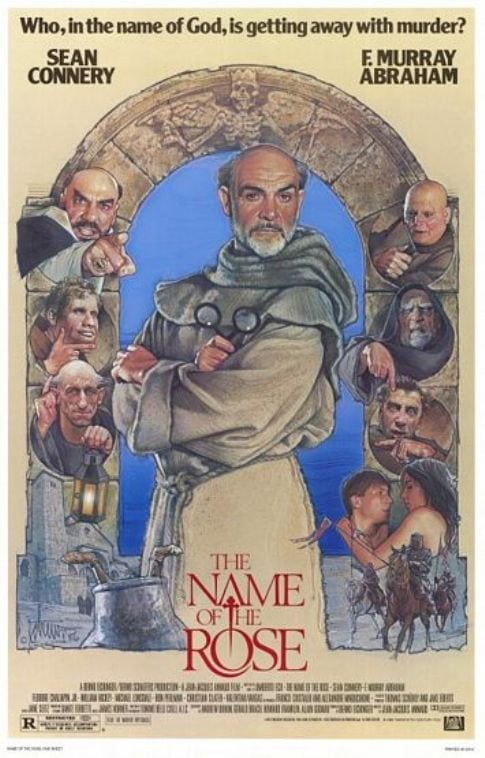
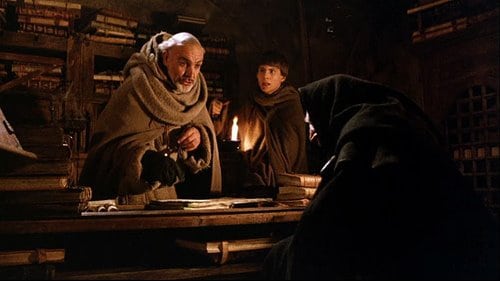
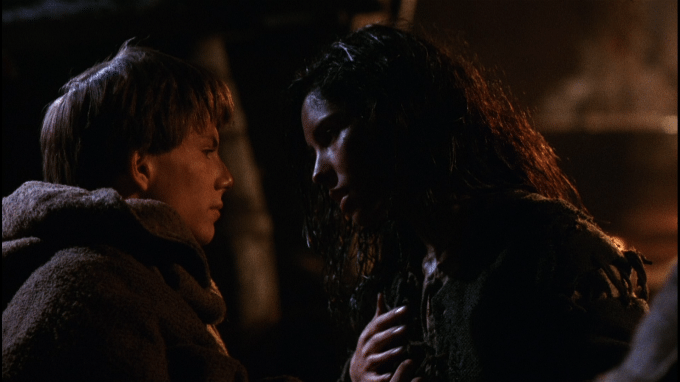


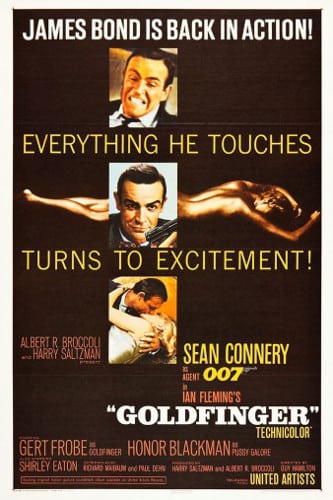
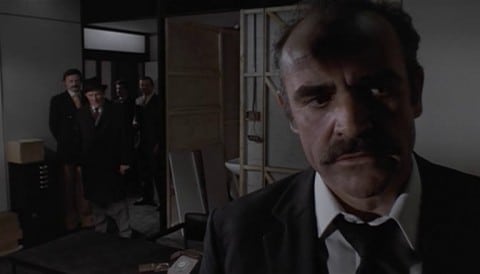
Be the first to comment